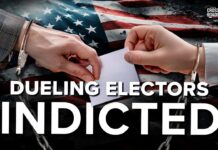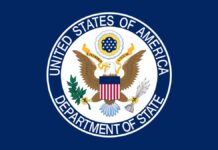This past week a number of pundits have said we are about to see almost 300 regional banks fail. The theory is these banks grew too quickly when interest rates were near zero under former President Donald Trump and the interest rates of the Joe Biden administration are now coming back to haunt them. The sizes of the banks predicted to fail are between $5 billion to $75 billion in assets, according to an analysis by Porticoes Capital.
“’$962 BILLION Due’ – Nearly 300 Banks Could FAIL Due to Collapse of Commercial Real Estate” – PBD Podcast
The story was triggered by a report out of the Federal Reserve after an investigation. The Klaros Group analyzed bout 4,000 U.S. banks and found 282 of those banks face stress from failing commercial real estate exposures along with higher interest rates. In a previous article we reported on the number of retail stores going out of business across the United States. The majority of these 282 banks are categorized as small banks with less than $10 billion in assets. “Most of these banks aren’t insolvent or even close to insolvent. They’re just stressed,” said Brian Graham, Klaros co-founder and partner at Klaros. “That means there’ll be fewer bank failures. But it doesn’t mean that communities and customers don’t get hurt.”
“EXPECT BANK RUNS: HUNDREDS of US Banks WILL FAIL and Face Bank Deposit Runs Soon” – Lena Petrova
Some experts are concerned the news of these failures could trigger a run on the banks which could lead to another depression. Of course the Federal Deposit Insurance Corporation (FDIC) insures accounts up to $250,000 which was not the case back in 1929 so such a calamity should not happen again. Still, the FDIC had only about $128 billion in their reserve a year ago for bank bailouts but there are $18 trillion in deposits across the nation so you can do your own math.
“CHART OF THE DAY: US households are now sitting on an ‘unprecedented’ $18 trillion in liquid assets” – Business Insider
Last year of 2023 the FDIC spent some $23 billion to bail out 5 banks . Experts worry what will happen to that fund if 6-12 big banks failed. They fear this could trigger a run on all of the nation’s banks.
- Citizens Bank, Sac City, Iowa 11/03/2023
- Heartland Tri-State Bank, Elkhart, Kansas 07/28/2023
- First Republic Bank, San Francisco 05/01/2023
- Signature Bank, New York 03/12/2023
- Silicon Valley Bank, Santa Clara, California 03/10/2023
Interest rates on mortgages just crept up above 7% again this month of May. The general consensus among financial experts is mortgage rates might slowly decline in the last quarter of 2024 but the banking industry will not be getting any help in the immediate future by the Federal Reserve lowering interest rates.
There are 4 main causes of banking crises related to social, financial, economic, and political factors.
Excessive Risk-taking
A common cause of banking crises is excessive risk-taking. This occurs when banks engage in risky lending practices or investments without adequate risk management. When this happens banks may become overexposed leading to a sudden loss of confidence by investors, depositors, and other stakeholders.
Non-Performing Loans (NPLs)
Another factor which can lead to banking crises is the presence of a large number of non-performing loans (NPLs). This results when borrowers default on their loans which can adversely affect the financial stability of banks. NPLs can cause a decline in economic activity which can produce a negative affect such as an increase in unemployment.
Macroeconomic Factors
Another cause of banking crises is independent variables external to the banking institutions themselves termed macroeconomic factors. Wikipedia defines Macroeconomics as “…a branch of economics that deals with the performance, structure, behavior, and decision-making of an economy as a whole.” Examples include rates of inflation, rates of unemployment, consumer debt, and currency devaluations.
Regulatory and Supervisory Failures
Finally, regulatory and supervisory failures can also contribute to banking crises. The subprime housing market crisis brought on by the Democrats led by Rep. Barney Frank (MA-D) in 2007–10 serves as a good example. The crisis stemmed from a previous expansion of mortgage credit. People of little means were allowed to purchase homes above their ability to pay with little to nothing down. Weak regulations with inadequate oversight and a lack of enforcement can lead to risky bank behaviors allowing them to engage in practices that can lead to their collapse.
CONCLUSION:
Some pundits are speculating that the crashing of the independent banks of the world is part of an intentional conspiracy to usher in the World Economic Forum’s (WEF’s) Central Bank Digital Currencies (CBDCs). If this is the case, this may not go over well with the world population as it is against human nature to be blindly led or played.
The WEF recently noted in a white paper report that 98% of all central banks are now pursuing CBDC programs. The report, titled “Modernizing Financial Markets With Wholesale Central Bank Digital Currency” (https://www.weforum.org/publications/modernizing-financial-markets-with-wcbdc/), claims “CeBM is ideal for systemically important transactions despite the emergence of alternative payment instruments…Wholesale central bank digital currency (wCBDC) is a form of CeBM that could unlock new economic models and integration points that are not possible today.”
What this really could be all about is removing the U.S. Dollar as the de facto trading standard known and trusted around the world for over 60 years and that should concern every American regardless of political party or any other differences.
Copyright © 2024 by Mark S. Schwendau













































